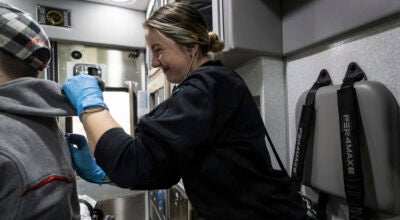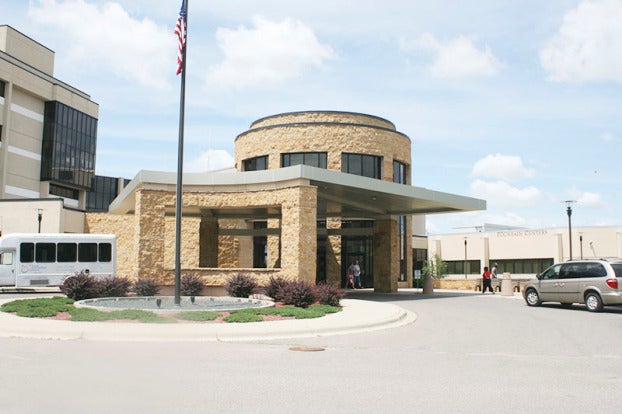Daily COVID-19 update: Positive trends hold; active cases below 100 in Freeborn County
Published 1:19 pm Friday, January 29, 2021
|
Getting your Trinity Audio player ready...
|
Minnesota’s COVID-19 trend lines continue to be mostly encouraging, and the pace of vaccinations is accelerating after a flat start.
New cases, active caseloads and hospitalizations all stayed relatively steady in the latest data.
Active, known COVID-19 case counts ticked up above 10,000 for the first time in several days, but the trend line continues to angle down. Active counts remain far lower than in late November when they hovered around 50,000.
The count of Minnesotans hospitalized with COVID-19 stands at 450, with 95 needing intensive care. ICU cases — a closely watched metric — are at their lowest level in more than four months.
The newest numbers come a day after Gov. Tim Walz expressed hope that most Minnesotans who are not in a priority group for a COVID-19 vaccine dose could be vaccinated in March or April.
The state’s recorded 459,747 confirmed or probable cases in the pandemic, including 1,145 reported Friday. Of those, about 96 percent of people have recovered to the point they no longer need to be isolated.
Twenty-eight newly reported deaths raised Minnesota’s toll to 6,168. Among those who’ve died, about 63 percent had been living in long-term care or assisted living facilities; most had underlying health problems.
The generally positive outlook is being tempered now by concerns of new virus strains arriving in the United States. All three known new COVID-19 variants have now been confirmed in the U.S., including a case of the Brazilian strain identified this week in Minnesota.
That has some experts worried about a looming spike in cases.
These more infectious variants “are now going to overlay on top of that very high baseline so what we can expect to see in the course of the next I think six to 14 weeks is something that we haven’t even come close to experiencing yet,” Michael Osterholm, head of the University of Minnesota’s Center for Infectious Disease Research and Policy, told CNN this week.
Cases spread across age groups, regions
People in their 20s still make up the age bracket with the state’s largest number of confirmed cases — more than 87,000 since the pandemic began, including more than 46,000 among people ages 20 to 24.
The number of high school-age youth confirmed with the disease has also grown, with more than 35,000 total cases among those ages 15 to 19 since the pandemic began.
Although less likely to feel the worst effects of the disease and end up hospitalized, experts worry youth and young adults will spread it to older relatives and members of other vulnerable populations.
It’s of particular concern because people can have the coronavirus and spread COVID-19 when they don’t have symptoms.
Caseloads are trending down across all regions of the state following a late December, early January blip.
Hot spots continue to pop up in rural counties relative to their population.
Caseloads still heaviest among people of color
In Minnesota and across the country, COVID-19 has hit communities of color disproportionately hard in both cases and deaths. That’s been especially true for Minnesotans of Hispanic descent for much of the pandemic.
Even as new case counts ease from their late November, early December peaks, the data shows people of color continue to be hit hardest.
Distrust of the government, together with deeply rooted health and economic disparities, have hampered efforts to boost testing among communities of color, officials say, especially among unauthorized immigrants who fear their personal information may be used to deport them.
Similar trends have been seen among Minnesota’s Indigenous residents during the pandemic. Counts among Indigenous people jumped in October relative to population.
Vaccine pace quickening
State leaders were challenged early on to get COVID-19 vaccine shots into arms quickly, and took criticism that the process was too slow at the start.
The latest numbers, though, show the upswing in vaccinations well underway.
More than 340,000 Minnesotans received at least one dose of COVID-19 vaccine as of Wednesday, about 6.3 percent of the state’s population.
The climb in vaccinations is encouraging news in what’s been a hopeful two weeks in the pandemic. Still, vaccine demand continues to far outpace supply.
Touring a vaccination clinic Thursday in Brooklyn Center, Minn., Gov. Tim Walz said the state is in line to get a 16 percent increase in vaccine shipments from the federal government, allowing Minnesota officials to plan weeks, not days, ahead.
With COVID-19 conditions improving now and vaccinations picking up, “this is a golden opportunity” to keep caseloads and hospitalizations down, he told reporters, adding, “we’re starting to win that fight a little bit.”
The governor said he’s hopeful most Minnesotans like him, who aren’t in a priority group for a COVID-19 shot, can get one in March or April. “I told my team I want it by the opening day of baseball season,” he said Thursday.
Opening day for the Minnesota Twins is April 1. The home opener is set for April 8.
South-central Minnesota update
Freeborn County reported 11 new COVID-19 cases and no new deaths on Friday.
The county’s active cases dropped from Thursday to 88. The range of ages newly affected was from 10 to people in their 90s; most of them were in their 40s.
There were no new hospitalizations, leaving the county’s total at 127.
Freeborn has had 2,571 total cases and 23 deaths.
The following are updates on other area counties:
- Faribault County: 12 new lab-confirmed cases; 1,114 total cases.
- Mower County: 76 new lab-confirmed cases; 3,793 total cases.
- Steele County: 16 new lab-confirmed cases; 2,824 total cases.
- Waseca County: 17 new lab-confirmed cases; 1,956 total cases.
Minnesota reported 28 more deaths — none in south-central Minnesota — caused by COVID-19 on Friday, along with 1,145 new cases.




